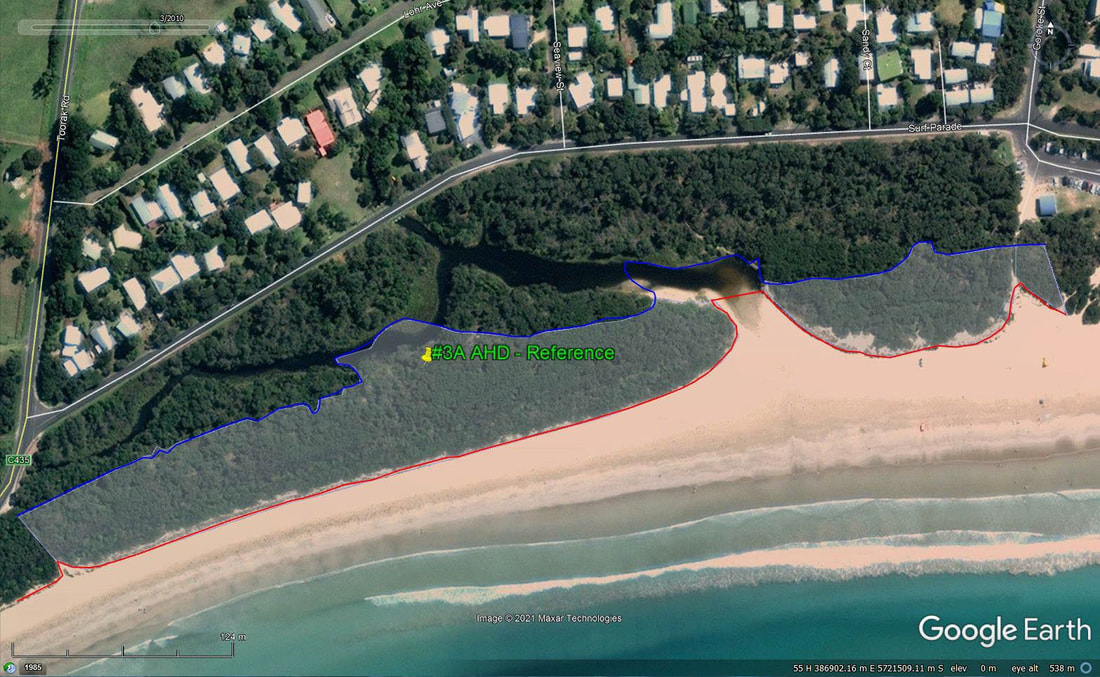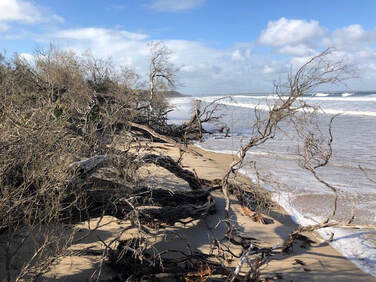 The shaded area shows dune vegetation on the Inverloch beach that has been swept away
The shaded area shows dune vegetation on the Inverloch beach that has been swept away between 2010 and 2020.
THE South Gippsland Conservation Society (SGCS) supports the Inverloch Surf Beach dune renourishment option outlined in the Coastal Hazard Assessment summaries that were recently released by the Victorian Government’s Cape to Cape Resilience Project team.
It is critical to the future of the surf beach, the ecological and cultural values of the vegetated dunes and the safety of adjoining residences that the remaining dunes are protected.
 Wreck Creek coastline
Wreck Creek coastline The other short-listed engineering adaptation actions assessed in the summary all have serious negative consequences – an extended rock wall would result in the lowering of sand levels and eventual loss of the surf beach, while the nearshore breakwater option would completely change its character.
We’re encouraged by the scale of the proposed renourishment action, involving importing around 100,000 cubic metres of sand to Flat Rocks and another 100,000 to 200,000 to the main surf beach. These volumes have been determined to achieve protection of the remaining dunes through to 2040, giving more time for long-term adaptation planning pathways to be progressed.
The success of the Parks Victoria dune renourishment, undertaken on either side of the Cape Paterson Road rock wall in June this year, has demonstrated how effective renourishment can be.
Our latest beach monitoring showing that the Wreck Creek coastline has been stable over the winter. We understand that the Parks Victoria works involved around 2,500 cubic metres of sand, so renourishment in excess of 100,000 cubic metres would add significant resilience to the dune system over the 91 per cent of the surf beach that has remained unprotected.
We look forward to the release of the full Coastal Hazard Assessment report, so future discussions can be fully informed by the detailed investigations undertaken by the project consultants.
The Society also urges the Cape to Cape team to complete their Stage 2 investigations as soon as possible to enable the finally agreed action to be costed, funded and implemented without further significant delay.
Philip Heath is leader of the South Gippsland Conservation Society’s Coastal Resilience Project.